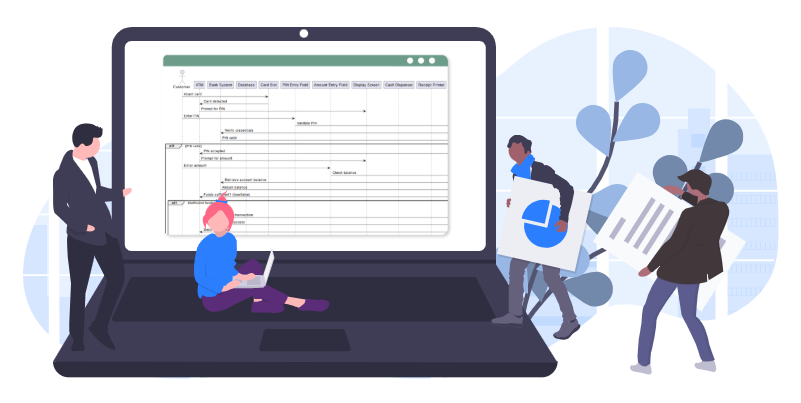Now Reading: Why AI-Generated Class Details Save Time and Reduce Errors | Visual Paradigm Online
-
01
Why AI-Generated Class Details Save Time and Reduce Errors | Visual Paradigm Online
Why AI-Generated Class Details Save Time and Reduce Errors | Visual Paradigm Online
Speed Up the Modeling Process
Creating a class diagram manually requires careful consideration of every class, attribute, operation, and relationship. For larger or more complex systems, this process can take hours or even days. AI-powered tools like Textual Analysis automatically generate relevant class details from a problem description, allowing you to:
- Quickly see candidate classes, suggested attributes, and operations derived directly from the system’s requirements
- Avoid repetitive manual entry and ensure no core components are overlooked
- Move from concept to diagram much faster, even when handling complex systems with many interrelated classes
This ensures that the diagram reflects the system accurately, which is crucial for downstream processes like coding or database design.

Reduce Human Errors
Even experienced designers can accidentally overlook attributes or operations, or misidentify relationships between classes. AI helps minimize these errors by:
- Analyzing the full problem description to capture all relevant entities, even those not obvious at first glance
- Suggesting consistent naming and logical structure for attributes and operations, reducing inconsistencies across the diagram
- Identifying relationships and multiplicities, like 1-to-many or many-to-many, that might be misrepresented manually
This ensures that the diagram reflects the system accurately, which is crucial for downstream processes like coding or database design.
Maintain Consistency Across Your Design
As systems grow in complexity, keeping class names, attributes, operations, and relationships consistent becomes challenging. AI assists by:
- Suggesting standardized attribute types and naming conventions across all classes
- Highlighting similar or repeated operations to avoid duplication
- Keeping relationships aligned across related classes, ensuring multiplicities and associations are correctly represented
Consistency not only improves diagram readability but also makes it easier for teams to implement the system without confusion or errors.
Focus on High-Level Design
By offloading detail work to AI, designers and architects can focus on strategic, high-level decisions rather than tedious manual tasks. This includes:
Structuring the overall system architecture and class hierarchy
Defining key business rules and constraints
Planning critical interactions between classes and modules
In practice, this means you spend less time worrying about minor details and more time making decisions that affect the system’s functionality, performance, and maintainability.
Edit and Refine Your Diagram in Visual Paradigm Online
Even after AI generates the class diagram, you have full control to customize and refine it using the Visual Paradigm Online Diagram Editor. This allows you to:
- Adjust class names, attributes, and operations to better fit your project’s needs
- Modify relationships, multiplicities, or diagram layout for clarity
- Add annotations or notes for team communication
- Ensure the diagram aligns perfectly with coding standards or design guidelines
This flexibility combines the speed of AI generation with the precision of human oversight, giving you a professional, ready-to-use class diagram.

Conclusion
AI-generated class details save time, reduce errors, and improve consistency, making class diagrams more accurate, professional, and easier to refine. By combining human insight with AI assistance and the flexibility to edit in Visual Paradigm Online, you can move from a problem description to a fully modeled system faster and more reliably than ever. This approach allows you to focus on designing robust, scalable, and maintainable systems rather than getting bogged down in repetitive detail work.

